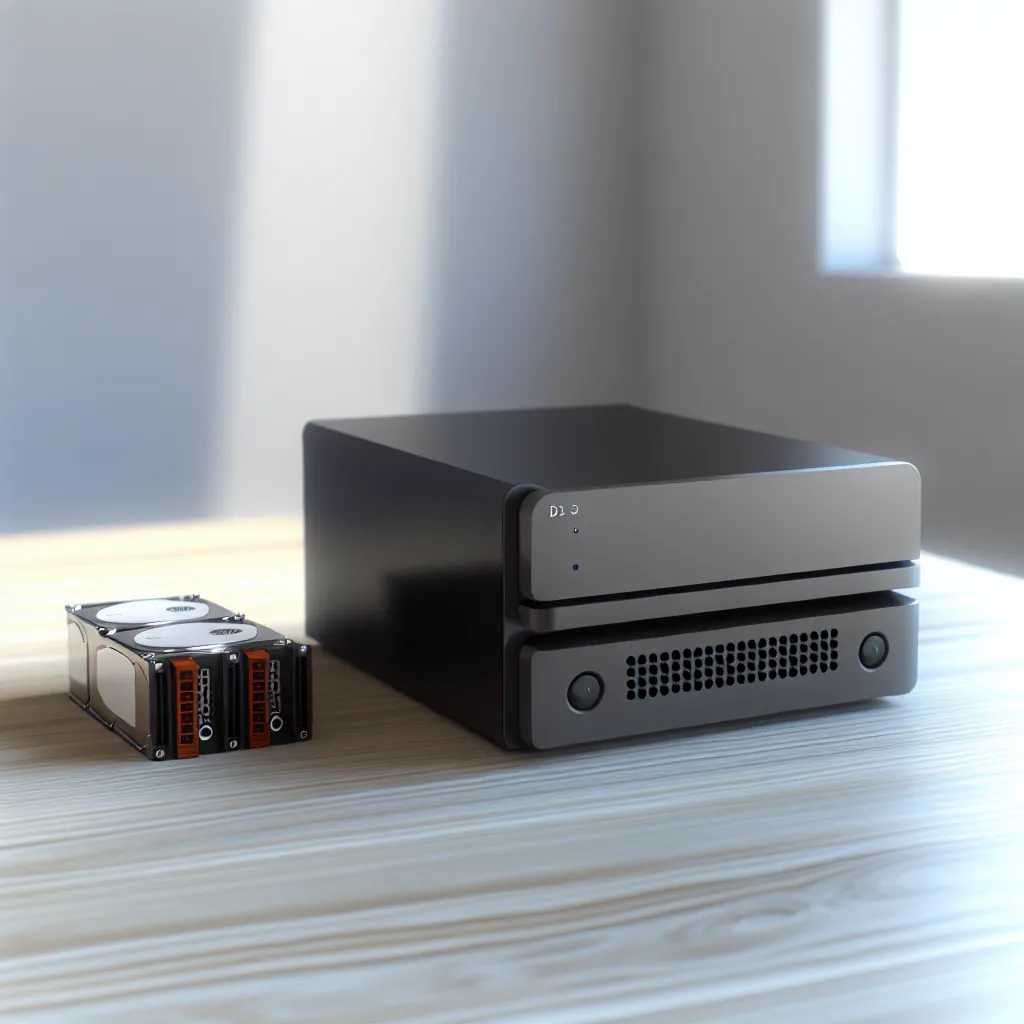You want a small, power-efficient PC for your home server, but you need space for two big hard drives. Here’s how to find the perfect machine.
I was browsing a tech forum the other day and stumbled upon a question I’ve asked myself a dozen times: “How can I find a small, quiet, power-efficient PC that still has room for two big 3.5-inch hard drives?” It’s a classic dilemma. You want to build a zippy little home server for Plex, backups, or a personal cloud, but you also need space for all your data. The search for the perfect dual 3.5 SFF PC is a real challenge, but a rewarding one when you finally find the right fit.
It feels like you’re searching for a unicorn. On one hand, you have tiny, palm-sized mini PCs that are amazing for their size but usually only have space for a tiny M.2 SSD. On the other, you have full-sized tower PCs with drive bays galore, but they’re big, noisy, and power-hungry. So, where’s the middle ground?
The good news is, it exists. You just have to know where to look.
Why is Finding a Dual 3.5 SFF PC So Tricky?
Let’s be real: the main reason it’s tough is physics. Small Form Factor (SFF) computers are designed to be, well, small. And 3.5-inch hard drives are chunky. They’re the old-school workhorses of data storage, and they take up a lot of physical space.
Modern PC design has moved towards M.2 SSDs for speed and their minuscule footprint. That’s great for your daily driver desktop, but not so much for a data-hoarding home server. Most manufacturers assume that if you need lots of storage, you’ll just buy a dedicated NAS box or use a bigger case.
But what if you want the best of both worlds? A capable PC that is your NAS. The secret often lies in the slightly-less-tiny SFF machines, particularly those that come from the corporate world.
Your Best Bet: Refurbished Office PCs
The unsung heroes in the quest for the perfect dual 3.5 SFF PC are the thousands of gently used corporate desktops from brands like Dell, HP, and Lenovo. These machines were built to be reliable 24/7 workhorses, and they often have just enough space for our project.
Here are a few models that consistently get recommended:
- HP ProDesk / EliteDesk (G4/G5/G6 and newer): These are fantastic. They typically come with an Intel 8th-gen or newer processor, which is more than enough power for a home server, including 4K video transcoding. They have one dedicated 3.5-inch bay and, crucially, a 5.25-inch optical drive bay.
- Dell Optiplex SFF: Much like the HP models, Dell’s SFF Optiplex line is a goldmine. They are widely available on the secondhand market, are built like tanks, and have a similar internal layout with bays you can adapt.
- Lenovo ThinkCentre M-Series SFF: Don’t sleep on Lenovo. Their ThinkCentre tiny PCs are too small, but the SFF versions are often the perfect size and offer great performance for the price.
You can find a great overview of these types of “TinyMiniMicro” PCs over at ServeTheHome, a fantastic resource for home lab enthusiasts. They dive deep into the performance and capabilities of these little machines.
The “Optical Drive Bay” Hack for your SFF PC
So, you’ve got your hands on an HP EliteDesk. It has one 3.5-inch bay, which you’ve filled. Where does the second drive go?
This is the trick: you use the 5.25-inch bay meant for a DVD drive. By using a simple and inexpensive adapter, you can mount a second 3.5-inch hard drive securely in that spot. These adapters are just metal brackets that screw into your hard drive and then slot perfectly into the larger bay.
You can find them all over sites like Amazon for just a few dollars. Just make sure you have an extra SATA data cable and a spare SATA power connector from the PC’s power supply, and you’re good to go. It’s a simple, elegant solution that doubles your storage capacity without changing the PC’s footprint.
What About Purpose-Built NAS Cases?
Of course, if you’re willing to build from scratch, you could go with a case specifically designed for this purpose. Brands like Fractal Design and Jonsbo make some beautiful, compact cases designed for home servers.
The Fractal Design Node 304, for example, is a classic choice that can hold up to six 3.5-inch drives in a shoebox-sized case. The Jonsbo N1 and N2 are also incredibly popular for their sleek, server-like designs.
The trade-off? This route is more expensive and time-consuming. You have to source all your own components—motherboard, CPU, RAM, power supply. Using a refurbished Dell or HP gives you all of that in one neat, affordable package. For most people just starting, the refurbished office PC is the easier and more budget-friendly path.
So, if you’ve been dreaming of building a compact server but felt stuck, I hope this helps. The perfect dual 3.5 SFF PC is out there, and it’s probably a retired office worker just waiting for a second life.
